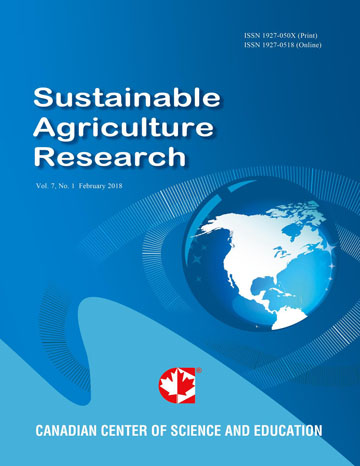The Influence of Cow Age on Botanical Composition of Diets in Mountain Riparian Areas in Eastern Oregon of the United States
- Enkhjargal Darambazar
- Timothy DelCurto
- Daalkhaijav Damiran
Abstract
The objective of this study was to evaluate the effect of cow age on botanical composition of diets in mountain riparian areas. Treatments consisted of 30 first-calf heifers, and 30 mature cows randomly assigned to four pastures (2 pastures/treatment, average 21.5 ha) in a 2-year study with a cross-over design. Botanical composition of diets was determined in fecal samples obtained from 10 animals in each treatment (5 per pasture) on the fourth week of 35 to 42-days grazing periods using the microhistological technique. Crude protein (CP) content and in vitro dry matter digestibility (IVDMD) were determined, and correction factors were calculated for 22 major plant species. In digested samples, grasses were overestimated, whereas, all forbs but northern bedstraw (Galium boreale L.), were underestimated, and all shrub species were overestimated except common snowberry (Symphoricarpos albus L.). Ponderosa pine (Pinus ponderosa Dougl.) was highly overestimated after digestion. There was no difference between cattle age class in the total number of plant species found in the diets (p > 0.10) averaging in 41 species. Most individual grass and grasslike species made up more than 5% of the diets, while all individual forb, shrub, and tree species were minor components, not exceeding 5%, except ponderosa pine. Western wheatgrass (Agropyron smithii Rybd.) and tufted hairgrass (Deschampsia caespitosa (L.) Beauv.) accounted for over 10% of the diets. Heifers consumed more (p < 0.05) grasses and fewer (p < 0.10) shrubs and trees compared to mature cows. The diet of heifers contained more western wheatgrass, Baltic rush (Juncus balticus Willd.), and pinegrass (Calamagrostis rubescens Buckl.) (p < 0.10), but less Kentucky bluegrass (Poa pratensis L.) (p < 0.01), than the diet of mature cows. The proportion of ponderosa pine needles was higher in the diet of mature cows (p < 0.10), than in the diet of first calf heifers. In summary, mature cows appeared to have selected a diet that contained less grasses and more shrubs and trees compared to younger cows.
- Full Text:
 PDF
PDF
- DOI:10.5539/sar.v3n1p1
Index
Contact
- Joan LeeEditorial Assistant
- sar@ccsenet.org
